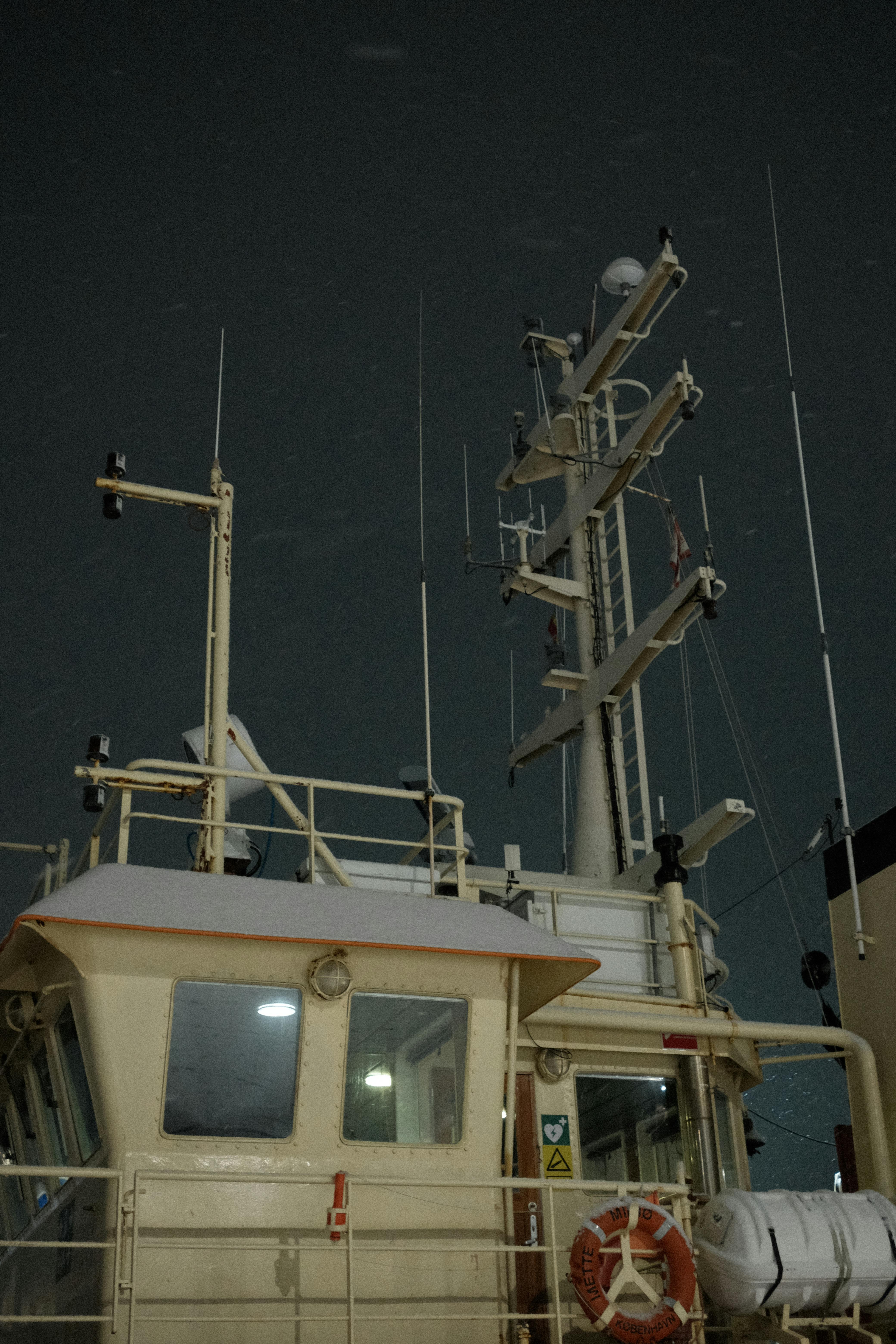When it comes to staying ahead of the unpredictable Aussie weather, have you ever wondered how accurate the Perth weather radar really is? This cutting-edge technology gives locals and visitors alike a real-time glimpse into upcoming storms, rainfall patterns, and even severe weather alerts. Whether you’re planning a weekend getaway or simply want to know if you should carry an umbrella, understanding the latest Perth weather radar updates can make all the difference. But what makes these radars so reliable, and how do they work to track Perth’s unique climate conditions? From tracking sudden thunderstorms to predicting heavy rainfall, the Perth weather radar system uses advanced Doppler technology that scans the skies continuously. It’s not just about spotting rain—these radars can detect wind shear, hail, and even tornado risks, which are critical for ensuring community safety. Curious about how you can access the most accurate and up-to-date radar images? Numerous online platforms now offer live radar feeds, helping you stay informed with just a few clicks. Don’t miss out on the essential tips and tools that make Perth weather radar tracking a must-have for everyone living in or visiting Western Australia. Ready to master the art of weather prediction? Keep reading to discover everything you need to know!
How Does Perth Weather Radar Detect Hidden Storms with Real-Time Precision?

When you think about Perth weather radar, what comes to your mind? Maybe a spinning disk somewhere up in the sky, sending out waves and catching raindrops? Well, you ain’t wrong. Weather radars are pretty much the unsung heroes in weather forecasting, especially in a place like Perth where the weather can flip faster than you can say “umbrella”.
What Exactly Is Perth Weather Radar?
At its core, the Perth weather radar is a device that uses radio waves to detect precipitation, like rain, hail, or snow (though snow is quite rare in Perth, let’s be honest). It sends out pulses of microwave energy that bounce off raindrops or any particles in the air and then listens for the echoes. The time it takes for the echoes to return tells how far away the rain is. This info is then processed to create images showing where the rain is falling, how heavy it is, and sometimes even the type of precipitation. Sounds cool, right? But, sometimes, the radars do act up and miss stuff, which can be quite frustrating.
Why Should You Care About Perth Weather Radar?
Not really sure why this matters, but knowing what the Perth weather radar says can be a lifesaver, especially if you’re planning a BBQ or heading out for a beach day. Perth’s climate can be quite unpredictable, with sudden showers or thunderstorms popping out of nowhere. Without radar data, weather forecasts would be like guessing the lottery numbers blindfolded.
Here’s a quick look at some reasons why radar is important for Perth residents:
| Reason | Explanation |
|---|---|
| Accurate precipitation tracking | Helps know where and when rain will fall |
| Storm warning | Early alerts for thunderstorms or severe weather |
| Flood prediction | Tracks heavy rainfall that might cause flooding |
| Aviation safety | Guides planes around storms and turbulent weather |
How Does The Radar Actually Work?
Now, I’m not a scientist or anything but from what I gather, the radar dish spins around 360 degrees, sending out these pulses. If it hits raindrops or any moisture, it bounces some of that energy back. The radar then measures the delay and intensity of the returning signal. The stronger the signal, the heavier the rain is likely to be. Sometimes the radar can even detect wind patterns by looking at how raindrops are moving.
Maybe it’s just me, but I find it fascinating how this technology turn invisible water droplets into those colourful maps we see on the news. Here’s a simplified breakdown:
- Radar sends pulse
- Pulse hits raindrops
- Echo returns to radar
- Radar calculates distance and intensity
- Data is processed into images
What You Can See On Perth Weather Radar Images
If you ever looked at a Perth weather radar image, you might notice a bunch of colours splashed all over the map. These colours usually represent different rain intensities:
| Colour | Intensity |
|---|---|
| Light Blue | Light drizzle or rain |
| Green | Moderate rain |
| Yellow | Heavy rain |
| Orange | Very heavy rain, possible hail |
| Red | Intense storms, severe weather |
Sometimes, you will see patches of grey or white which might be ground clutter or interference, not actual rain. Radar isn’t perfect, and sometimes picks up things that aren’t there – like birds, or even planes flying through. Kinda annoying if you ask me, but that’s technology for you.
Practical Tips For Using Perth Weather Radar
So, you probably wondering how to make use of this radar info without getting bogged down by all the technical jargon? Here’s some quick tips I’ve picked up along the way:
- Check the radar frequently if you planning to be outdoors
- Look for sudden changes in colours, they usually indicate incoming storms
- Use radar in conjunction with local weather forecasts for best results
- Don’t rely solely on radar for long term planning, it’s more about short term updates
- Beware of radar blind spots, areas where the radar cant see well due to terrain or distance
Where To Access Perth Weather Radar Data?
Luckily, getting your hands on Perth weather radar data is easier than ever these days. Several websites and apps provide near real-time radar images. Here are some popular options:
| Platform | Features | Accessibility |
|---|---|---|
| Bureau of Meteorology (BOM) | Official radar with detailed maps | Free online |
| Weatherzone | Interactive radar with overlays | Free & Premium |
| Windy | Global radar with wind models | Free |
| Local News Apps | Radar integrated into weather updates | Free |
Most of these platforms allow you to zoom into specific areas around
Top 5 Benefits of Using Perth Weather Radar for Accurate Storm Tracking
If you ever been curious about what the Perth weather radar actually tells us, well, you are not alone. I mean, it’s not just some fancy gadget sitting there spinning around for no reason, right? Honestly, these radar systems have become quite the lifesaver, especially when you want to know if you should carry an umbrella or not – which I swear, in Perth, is a gamble half the time. But, and here’s the thing, sometimes I wonder if we really understand what those blips and colours on the screen means.
So, what is this Perth weather radar all about? In simple words, it’s a technology that sends out radio waves and then listens to them bouncing back from raindrops, hail, or even dust particles. Sounds fancy, but what it boils down to is giving us a picture of where the rain is, how heavy it might be, and how it moves. You see, the radar isn’t just for rain, it can show storms, wind patterns, sometimes even tornadoes if you’re lucky or unlucky depending how you see it. Not really sure why this matters, but the radar data can also be used to predict flooding or warn about severe weather which is kind of important in a place like Perth where weather can change fast.
Here’s a quick table to give you an idea of the types of information you can get from the Perth weather radar:
| Data Type | Description | Why It Matters |
|---|---|---|
| Rain Intensity | Shows how heavy rain is falling | Helps decide if you need a coat or not |
| Storm Tracking | Tracks movement of storms | Important for safety warnings |
| Wind Patterns | Visualises wind direction and speed | Useful for sailors and pilots |
| Hail Detection | Detects hail size and location | Protects property and vehicles |
Now, you might think that all this data is just for weather geeks or meteorologists, but nah, it’s pretty useful for everyday folks too. Maybe it’s just me, but I feel like I check the Perth weather radar more than the actual forecast sometimes. Forecasts can be vague or just plain wrong, but the radar – it gives you the raw data. Of course, interpreting that data is a different story. Sometimes the radar shows a big blob of green over your area, which supposedly means rain, but when you step outside, it’s dry as a bone. Go figure.
One thing that always confuses me is the colour coding on the radar screen. You get all these greens, yellows, reds, and sometimes purple, but what the hell do they really mean? Here’s a simple breakdown that might help:
- Green: Light rain, maybe just a drizzle, carry on with your day.
- Yellow: Moderate rain, better grab that umbrella.
- Red: Heavy rain or severe storm, might want to rethink outdoor plans.
- Purple: Hail or intense storm – time to hide or at least move the car under cover.
If you ever wanted to play weather detective, the Perth weather radar is your best mate. Just keep in mind, the radar has limits. It can’t see through mountains or very far distances sometimes, which means it might miss some smaller showers or storms. Plus, sometimes you get weird echoes or false readings – like when birds or planes fly through the radar beam. It’s like when your phone picks up a weird signal and suddenly everything goes haywire.
Here’s a little checklist if you want to get the most out of the Perth weather radar:
- Check the radar regularly, not just once a day.
- Pay attention to storm movement, don’t just look at where it is now.
- Use the radar along with local weather warnings.
- Don’t trust it blindly – sometimes the forecast is better.
- Remember that radar shows precipitation, but not temperature.
And speaking of temperature, the radar won’t tell you if it’s freezing cold or warm outside. For that, you still need a thermometer or your own unreliable gut feeling. Also, if you’re into gardening or farming, keeping an eye on the Perth weather radar can save your crops from surprise hail storms or droughts.
Here’s an example of how you might use the radar data practically:
| Scenario | Radar Clue | Action to Take |
|---|---|---|
| Sudden heavy rain approaching | Large red patch moving towards | Take shelter, secure outdoor items |
| No rain shown on radar | Clear screen or light green | Perfect time for a picnic or walk |
| Storm with hail detected | Purple spots on radar | Move vehicles under cover, protect plants |
| Wind changes rapidly | Shifting wind pattern on radar | Stay indoors if near coast or |
Unlocking the Secrets of Perth Weather Radar: Your Ultimate Guide to Severe Weather Alerts
Perth Weather Radar: What’s the Deal with It?
When it comes to Perth weather radar, I have to say, it’s a bit of a lifesaver, especially when you’re planning your weekend picnic or just trying to avoid getting drenched on your way to work. But honestly, sometimes it feels like you’re watching a magic show that’s missing a few tricks. You know? The radar shows clouds moving in one direction, and then the rain decides to come from the other side. Not really sure why this matters, but it can be a bit frustrating when you’ve got your brolly ready and it stays dry all day.
Anyway, let’s dive into what the best perth weather radar apps usually offer and why you might want to keep an eye on them. They don’t just show rain, but also wind speed, temperature changes, and even storm warnings. I mean, it’s like having your own mini meteorologist in your pocket, except it doesn’t judge you when you ignore its warnings.
How Does Perth Weather Radar Work?
Here’s a quick rundown — the radar sends out radio waves that bounce off rain drops, hail, or snow and then return to the radar station. The data is then processed to show where the precipitation is and how heavy it might be. Simple, right? But somehow, the rain sometimes decides to play hide and seek, and the radar misses it. Maybe it’s just me, but I feel like the radar could use a bit more training.
To make things clearer, here’s a table showcasing typical radar data aspects:
| Parameter | Description | Why It Matters |
|---|---|---|
| Reflectivity | Shows the intensity of precipitation | Helps predict how heavy the rain is |
| Velocity | Measures wind speed and direction | Useful for storm tracking |
| Echo Tops | Height of the precipitation cloud | Indicates storm strength |
| Precipitation Type | Differentiates between rain, snow, hail, etc. | Helps in planning appropriate gear |
Now, when you look at Perth rain radar live updates, you can spot these parameters in action. But let me tell you, interpreting them isn’t always a walk in the park. Sometimes it feels like you need a degree in meteorology just to understand what that weird coloured blob means. Plus, the radar images update every few minutes, but if you blink, you might miss a sudden change.
So, Why Bother With Perth Weather Radar?
Well, for starters, Perth has a pretty unpredictable climate. Summers can be scorchers with barely a cloud in sight, and winters might surprise you with a downpour or two. Having access to the Perth weather radar real time is like having a heads-up before the weather throws tantrums. It’s especially handy for those living near the coast where sea breezes can bring sudden showers.
Here’s a little list of practical uses for the radar data:
- Planning outdoor events: Weddings, barbecues, cricket matches – no one wants a soggy celebration.
- Travel safety: Avoiding flooded roads or hazardous driving conditions.
- Farmers and gardeners: Knowing when to water or protect crops from frost.
- Fishermen and surfers: Watching out for dangerous weather offshore.
But don’t get too cocky thinking the radar’s infallible. Sometimes it confuses light drizzle with nothing at all, or it might freak out over a bit of dust in the air and show false alarms. It’s like that one friend who exaggerate everything, you know?
Now, I thought it’d be helpful to give you some pointers on where to find the most reliable Perth weather radar online platforms. Here’s a quick rundown:
| Website/App | Features | User Friendliness | Accuracy |
|---|---|---|---|
| Bureau of Meteorology (BOM) | Official radar, detailed maps | Moderate | High |
| Weatherzone | Radar + forecasts + alerts | High | Medium-High |
| Windy | Interactive maps + radar layers | High | Medium |
| RainViewer | Live rain radar + historical data | Moderate | Medium |
It’s almost like choosing your favourite ice cream flavour – everyone’s got their preference, and some platforms just suit different needs.
Fun fact: Sometimes the radar picks up birds or even insects and shows them as light rain. So if you’re seeing strange patterns, it might just be a flock of seagulls flying past. Not really sure why this matters, but it kinda makes you wonder what else the radar is getting wrong.
To wrap things up (without actually wrapping up), keep in mind that Perth weather radar information is a tool, not a crystal ball. It helps you guess the weather,
Why Real-Time Perth Weather Radar Is Essential for Outdoor Planning and Safety
Perth Weather Radar: What’s All The Fuss About?
If you ever been in Perth, you probably aware of how quickly the weather can change. One moment it’s sunny and bright, next moment you’re caught in a downpour that feels like the sky is falling apart. That’s where the Perth weather radar comes in handy, or so they say. But honestly, not really sure why this matters, but it’s supposed to help locals and visitors alike to keep an eye on the weather shifts, especially when you’re planning outdoor activities or just trying to avoid getting soaked.
So, what is this Perth weather radar thingamajig? In simple terms, it’s a device that uses radio waves to detect rain, storms, and sometimes even hail or strong winds. The radar sends signals into the atmosphere, which bounce off precipitation particles and return back to the radar. The time it takes for the echo to come back helps determine how far away the rain or storm is. Sounds fancy, right? Well, it is, but it’s not exactly foolproof. Sometimes the radar might show rain on the screen, but when you step outside, there’s nothing but dry air.
Here’s a quick rundown in a table to show you what the Perth weather radar generally can and can’t do:
| What Perth Weather Radar Can Do | What Perth Weather Radar Can’t Do |
|---|---|
| Detect rain intensity | Predict exact rainfall amounts |
| Show movement of storms | Detect temperature changes |
| Help to warn about incoming storms | Forecast sunshine or cloud cover precisely |
| Give a rough idea of storm speed | Detect fog or very light drizzle |
Now, maybe it’s just me, but I feel like sometimes people put too much trust in these radars. Like, the radar says there’s a big storm coming, so they cancel their weekend plans, and then the sun’s shining all day long. That’s weather for you — unpredictable and a bit cheeky. Also, the Perth weather radar updates can be delayed by a few minutes, which in fast-changing weather conditions might be the difference between staying dry or getting drenched.
How To Read The Perth Weather Radar Like A Pro (Or Not)
Reading the radar images can be a bit confusing at first. The screen usually shows a map with coloured blobs or patches, which represent rain or storm intensity. Green means light rain, yellow and orange mean moderate to heavy rain, and red or purple means very heavy rain or severe storms. But sometimes you’ll see weird shapes, or the radar might pick up things that aren’t rain at all — like birds flapping around or even interference from other devices.
Here’s a little cheat-sheet for you:
- Green: Light rain, maybe just a few drops
- Yellow: Moderate rain, better take the umbrella
- Orange: Heavy rain, probably a good idea to stay indoors
- Red/Purple: Severe weather alert, batten down the hatches!
Of course, these colours might slightly vary depending on the radar provider, but that’s the general idea. And if you want to be really fancy, some apps and websites show the radar in animation, like a little movie of the rain moving across Perth. It’s kinda fun to watch, but don’t get too obsessed, or you’ll be glued to your screen all day.
Practical Tips To Use Perth Weather Radar Effectively
You probably think, “Alright, I get it, the radar shows rain. Now what?” Well, here’s some practical insights that might help you actually use the radar without losing your mind:
- Check the radar regularly, especially if you’re planning to be outdoors. Weather can change fast in Perth.
- Combine radar data with local weather forecasts for a fuller picture. The radar alone doesn’t tell you everything.
- Don’t rely on the radar too far in advance; it’s better for short-term weather updates.
- Use multiple sources — some websites and apps offer different radar views or additional weather information.
- If you see red or purple blobs near your location, take it seriously. It could mean severe thunderstorms or even hail.
And here’s a quick listing of some popular websites and apps that offer Perth weather radar services:
- Bureau of Meteorology (BOM) Radar
- Weatherzone Radar
- Windy.com Radar
- AccuWeather Radar
- RadarScope (for the serious weather geeks)
Table: Comparing Features of Popular Perth Weather Radar Apps
| App Name | Radar Animation | Severe Weather Alerts | User Friendly | Free Version Available |
|---|---|---|---|---|
| BOM Radar | Yes | Yes | Moderate | Yes |
| Weatherzone | Yes | Yes | High | Yes |
| Windy.com | Yes |
Exploring Advanced Features of Perth Weather Radar to Predict Storm Patterns Effectively
Perth Weather Radar: What’s Up With It?
Alright mate, let’s have a chinwag about the Perth weather radar and why it might just be the thing you didn’t know you needed. Now, I’m not no weather expert, but I have been staring at these radars for a while now. Sometimes I wonder if they’re just throwing random data at us, but hey, what do I know? The radar basically helps us see the weather coming, which is useful, especially in a place like Perth where the weather can change quicker than you can say “sunburn”.
So, first things first, the Perth weather radar system works by sending out radio waves that bounce off rain droplets and other precipitation. The radar picks up these echoes, and from that, it figures out where the rain is and how heavy it might be. Sounds fancy, doesn’t it? But sometimes, the radar misses a spot or shows rain where there’s actually blue skies. Not really sure why this matters, but it’s a bit annoying when you plan a BBQ and then the radar says it’s going to bucket down.
Table: Perth Weather Radar Coverage Areas
| Area | Radar Range (km) | Typical Update Frequency | Notes |
|---|---|---|---|
| Perth Metro | 150 | Every 6 minutes | Covers most urban areas |
| Coastal Zone | 100 | Every 6 minutes | Sometimes affected by sea clutter |
| Inland Regions | 80 | Every 10 minutes | Less frequent updates |
Now, if you’re like me and you often check the Perth weather radar live updates before leaving the house, you might notice that the radar images look like a colourful mess. There’s blues, greens, reds, and even purple bits that might make you think it’s some kind of abstract art. Apparently, the colours indicate the intensity of rainfall – green for light, red for heavy, and purple for, well, very heavy rain or hail. Maybe it’s just me, but I feel like sometimes the colours don’t match what’s actually happening outside my window. Like, it could be pouring in the radar but perfectly dry on my street.
Here’s a quick list of what the different radar colours mean (in theory):
- Green: Light rain, maybe a drizzle
- Yellow: Moderate rain, you might want a brolly
- Red: Heavy rain, stay indoors if you can
- Purple: Severe weather, hail or thunderstorms
You’d think a Perth weather radar map would be straightforward, but nah, it’s got quirks. One thing that bugs me is the “clutter” on the radar. This is when the radar picks up stuff that isn’t rain at all. Birds, planes, even dust can show up and mess with the picture. It’s like trying to watch a movie with someone constantly flicking the lights on and off. The radar operators have to filter this clutter out, but sometimes some of it still sneaks through, making us think there’s rain when there isn’t any.
Practical Insight: How to Use Perth Weather Radar Like a Pro
- Always check the timestamp on the radar image. Weather can change fast and old images aren’t much good.
- Look for movement in the radar patterns. If rain is approaching, you’ll see the blobs moving towards your location.
- Don’t rely on radar alone. Combine it with weather forecasts and your own eyeballs.
- Use radar apps that update frequently. Some update every 5 minutes, which is pretty handy.
- Be sceptical of sudden colour changes or weird blotches – could be clutter or technical glitches.
Now, I know there’s a bunch of websites and apps offering Perth weather radar real-time data, but not all of them are created equal. Some are slow, others are too busy with ads, and a couple of times I found the radar stuck on the same frame for ages. It’s like trying to watch a live soccer match on a dodgy stream. Frustrating as heck!
Here’s a little comparison chart I whipped up for your convenience:
| Platform | Update Speed | User Interface | Ads Level | Accuracy (Subjective) |
|---|---|---|---|---|
| Bureau of Meteorology | 6 mins | Simple | Low | High |
| Weatherzone | 5 mins | Busy | Medium | Medium |
| RadarScope | 1 min | Complex | Low | Very High |
| AccuWeather | 10 mins | Simple | High | Medium |
In terms of accuracy, the Perth weather radar system from the Bureau of Meteorology is usually the go-to, but sometimes even they
Conclusion
In conclusion, Perth weather radar plays a crucial role in providing accurate and timely information about local weather conditions, helping residents and visitors stay prepared for sudden changes. By continuously monitoring rainfall, storms, and other atmospheric phenomena, the radar system enhances safety and supports effective decision-making for daily activities and emergency responses. Whether you are planning outdoor events, commuting, or managing agricultural operations, staying informed through Perth’s weather radar is invaluable. Embracing this technology not only improves awareness but also fosters a proactive approach to dealing with the unpredictable nature of Western Australia’s climate. To make the most of these benefits, regularly checking the latest radar updates and weather forecasts is highly recommended. Stay ahead of the weather by utilising Perth weather radar and enjoy greater peace of mind in your day-to-day life.








































































